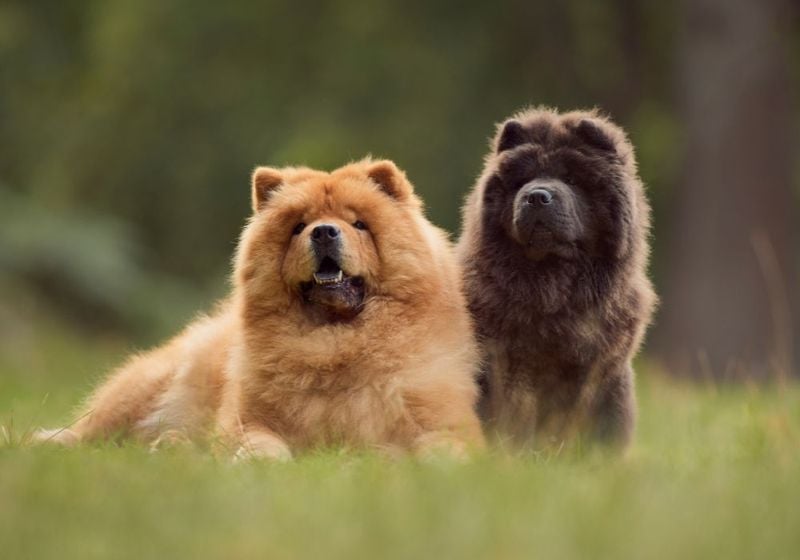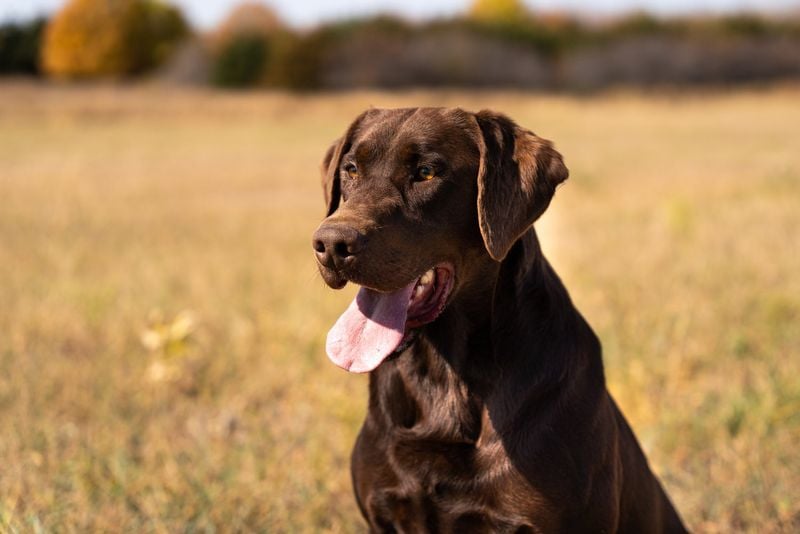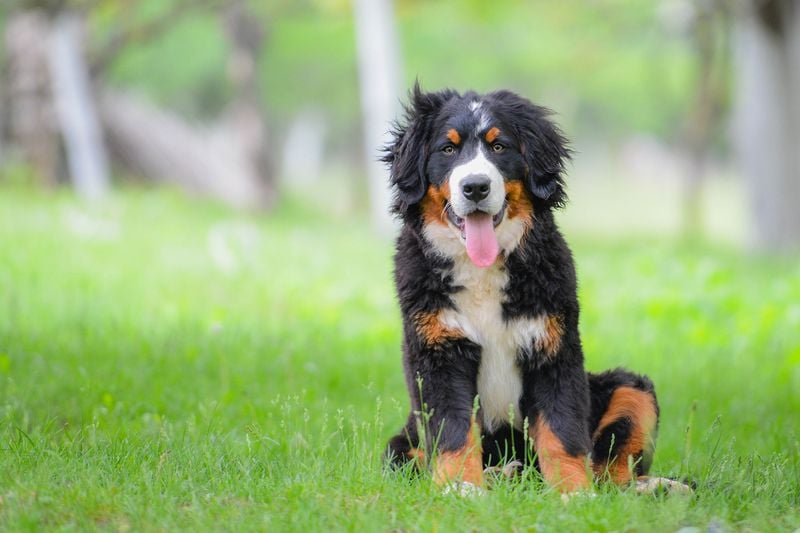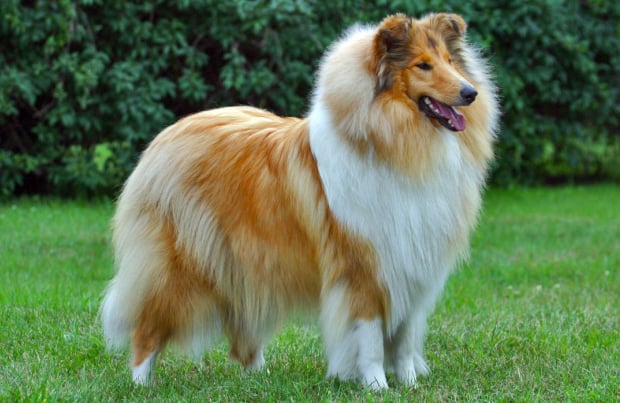12 Pups Ready to Defend You and 12 That’ll Welcome Intruders with Tail Wags
When it comes to home security, our four-legged friends can play very different roles. Some dogs are natural protectors, born with strong territorial instincts and a deep sense of loyalty.
These vigilant breeds won’t hesitate to alert you—or anyone within earshot—when something feels off. Their courage, awareness, and devotion make them trusted guardians of the home, ready to stand their ground when it matters most.
On the other hand, there are dogs who greet everyone, friend or stranger, with tail wags and wet-nosed enthusiasm. These social butterflies thrive on human interaction and see no difference between a welcome guest and an unexpected visitor. While they may not be your first line of defense against intruders, they excel at making people feel loved—sometimes too loved, if your goal is home protection.
Whether you’re looking for a dependable watchdog to boost your sense of security or a lovable companion who brings joy to every guest, understanding how different dog breeds naturally respond to strangers is key.
In this list, we’ll explore 12 breeds that will let intruders walk right in—and 12 that will stand guard no matter what. From fearless defenders to friendly greeters, here’s how man’s best friend might handle an unexpected knock at the door.
1. German Shepherd: The Loyal Guardian
Bred specifically for their intelligence and obedience, German Shepherds excel at protection work. Their natural alertness means they can distinguish between normal situations and potential threats, making them less likely to bark without cause.
These devoted dogs form incredibly strong bonds with their families and will instinctively place themselves between loved ones and danger. With proper training, they maintain a perfect balance – approachable with family but appropriately cautious with strangers.
Military and police forces worldwide choose German Shepherds for their courage, trainability, and unwavering loyalty. Their protective instinct is matched only by their desire to please their owners, creating the ultimate guardian companion.
2. Doberman Pinscher: The Sleek Protector
Dobermans combine sleek athleticism with razor-sharp intelligence. Originally bred as tax collector guards in Germany, these dogs possess natural protective abilities that make them exceptional sentinels for your home.
Their imposing presence alone often deters potential intruders. Despite their intimidating reputation, well-trained Dobermans are incredibly discerning – fiercely protective when necessary but gentle with family members, especially children.
Lightning-fast reflexes and keen senses allow them to respond instantly to threats. Modern breeding has softened their temperament somewhat, but their protective instinct remains deeply ingrained. A properly socialized Doberman offers the perfect combination of loving family companion and reliable guardian.
3. Rottweiler: The Powerful Guardian
With a commanding presence and an air of quiet confidence, these powerful canines naturally earn respect wherever they go. Tracing their lineage back to Roman drover dogs, they’ve spent centuries herding livestock and standing guard—protective instincts that are deeply ingrained.
Despite their stern appearance, Rottweilers are deeply devoted to their families and display surprising tenderness with children they trust. Their innate wariness around strangers isn’t aggression—it’s careful evaluation, shaped by a strong sense of duty.
Tipping the scales at up to 135 pounds of solid muscle, they possess formidable strength. Their protective nature doesn’t require much coaxing; it comes naturally. Still, proper socialization from an early age is key to ensuring their confidence doesn’t tip into overguarding.
4. Belgian Malinois: The Tireless Sentry
Belgian Malinois possess seemingly boundless energy paired with laser-focused intelligence. These dogs thrive on having jobs to do, making protection work perfectly suited to their natural drives and abilities.
Military and law enforcement agencies increasingly choose Malinois for their incredible work ethic and versatility. Their lean, muscular build allows them to move with astonishing speed and agility when responding to threats.
Beneath their intense working drive lies a deeply loyal heart. Malinois form unbreakable bonds with their handlers and will protect them without hesitation. Their heightened sensitivity makes them exceptionally responsive to changes in their environment – very little escapes their notice.
5. Akita: The Dignified Defender
Dignified yet undeniably formidable, Akitas bring a distinct blend of calm strength to their role as protectors. Originally bred for Japanese nobility, they were valued for their fierce loyalty and strong guarding instincts—traits that remain deeply embedded in the breed today.
Naturally quiet and composed, Akitas prefer to watch and assess rather than bark unnecessarily. Beneath this reserved exterior lies a powerful defender, capable of decisive action when their family is at risk. Their muscular build and strong jaws only add to their intimidating presence.
While deeply affectionate with their own, Akitas tend to be aloof with unfamiliar people. In Japanese culture, they’re considered symbols of health, happiness, and longevity—often gifted to celebrate new beginnings. Their instinct to protect shines especially bright when it comes to the children they live with.
6. Boxer: The Playful Guardian
Boxers blend playful exuberance with surprising protective instincts. Their expressive faces and bouncy demeanor might fool you, but these medium-sized dogs take their guardian duties seriously when the situation demands it.
Originally bred in Germany for bull-baiting and later as working dogs, Boxers retain their courage and protective drive. They form especially strong bonds with children in their family, often appointing themselves as personal guardians to the youngest household members.
Despite their muscular build and determined nature, Boxers typically assess situations before reacting. Their natural intelligence allows them to distinguish between actual threats and normal household activities, making them reliable family protectors who won’t overreact to everyday events.
7. Giant Schnauzer: The Bearded Sentinel
Behind that distinctive beard and eyebrows lies one of the most effective canine protectors. Giant Schnauzers combine imposing size with remarkable intelligence, creating a dog that excels at property protection and personal guardianship.
Developed in Germany as all-purpose farm dogs, they later found roles in police and military work. Their territorial nature makes them naturally suspicious of strangers entering their domain. Without proper socialization, this protective instinct can become excessive.
Giant Schnauzers process information quickly and remember faces exceptionally well. Their protective drive comes with remarkable discernment – they can differentiate between welcome guests and potential threats. With proper training, they balance their protective nature with appropriate social behavior.
8. Bullmastiff: The Gentle Giant Guardian
Bullmastiffs were specifically bred by English gamekeepers to tackle poachers – literally. These massive dogs would track intruders, silently approach, and physically pin them down without causing serious injury, earning them the nickname “gamekeeper’s night dog.”
Despite their intimidating size – often exceeding 130 pounds – Bullmastiffs typically respond to threats with remarkable restraint. They prefer to block an intruder’s path or pin them down rather than attack, making them excellent family guardians.
Their natural protective instinct requires minimal training. Bullmastiffs form deep bonds with their families while maintaining healthy skepticism toward strangers. Their imposing presence alone often prevents confrontations from occurring in the first place.
9. Chow Chow: The Aloof Protector
Beneath that fluffy teddy-bear exterior lies one of the most naturally protective dog breeds. Chow Chows approach their guardian duties with an independent, almost cat-like demeanor that dates back to ancient China, where they served as temple guardians and hunting companions.
Their natural suspicion of strangers isn’t personal – it’s deeply ingrained in their DNA. Chows form strong bonds with their immediate family but remain cautious and reserved with everyone else. Their territorial nature makes them excellent property guardians.
Unlike more demonstrative protective breeds, Chows operate with quiet vigilance. Their distinctive blue-black tongues and lion-like appearance once made them status symbols among Chinese nobility. Today, they continue their ancient tradition as dignified home protectors.
10. Cane Corso: The Ancient Guardian
Tracing their lineage to ancient Roman war dogs, Cane Corsos were built for protection. These powerful Italian mastiffs served as property guardians, hunting companions, and even battlefield dogs throughout their long history.
Modern Cane Corsos retain their ancestral protective instincts. Their imposing physique – muscular bodies, broad heads, and serious expressions – naturally deters potential intruders. Despite their intimidating appearance, they show remarkable gentleness with family members.
Highly territorial by nature, these dogs view home protection as their primary responsibility. Their athleticism belies their size; they can move with surprising speed when responding to threats. A well-trained Cane Corso distinguishes between normal situations and genuine dangers, making them reliable family guardians.
11. Rhodesian Ridgeback: The Lion Hunter
Originally bred to track and hold lions at bay in Africa, Rhodesian Ridgebacks bring courage and independence to their protective roles. Their distinctive ridge of backward-growing hair along their spine marks them as unique among protective breeds.
These athletic dogs possess remarkable discernment when assessing threats. Rather than reacting aggressively to every stranger, they carefully evaluate situations before responding. Their protective instinct typically manifests as positioning themselves between their family and potential dangers.
Ridgebacks operate with quiet confidence rather than excessive barking. Their territorial nature makes them naturally protective of home and family without specialized training. When properly socialized, they balance their protective instincts with appropriate social behavior.
12. Australian Shepherd: The Vigilant Herder
Australian Shepherds approach protection through their natural herding instincts. Originally developed to manage livestock, these dogs transfer their watchful attention to their human families, monitoring for anything out of place.
Their exceptional intelligence allows them to distinguish between normal activities and potential threats. Unlike some protective breeds, Aussies typically alert their owners to concerns rather than taking aggressive action themselves. This makes them excellent watchdogs for families seeking awareness without intimidation.
Boundless energy combined with keen situational awareness makes these dogs highly effective perimeter monitors. Their strong herding drive means they naturally keep track of family members’ whereabouts. With their striking multicolored coats and intense focus, Aussies provide both protection and companionship.
Now that we’ve met the pups who are ready to defend you, let’s take a look at the ones who’d welcome an intruder with tail wags and zero suspicion.
1. Golden Retriever: The Friendly Greeter
Golden Retrievers embody the phrase “never met a stranger.” Their famously sunny disposition means they typically view unexpected visitors as new friends rather than potential threats. This inherent friendliness makes them poor candidates for guard dog duties.
Originally bred as hunting companions, Goldens were specifically selected for their gentle mouths and cooperative nature. Their strong desire to please humans typically overrides any protective instincts they might possess. Many will happily show intruders to the family valuables if it means making a new friend!
Their enthusiastic tail-wagging welcome extends to virtually everyone they meet. While their bark might alert you to someone’s presence, their wagging tail and happy demeanor immediately signal that there’s no real threat.
2. Labrador Retriever: The Happy Ambassador
America’s most popular dog earned its status through unmatched friendliness. Labs typically greet everyone – family, friends, strangers, and even potential intruders – with the same enthusiastic welcome. Their people-loving nature makes them excellent therapy dogs but ineffective guardians.
Bred as working companions for fishermen in Newfoundland, Labradors were selected specifically for their cooperative, non-aggressive temperaments. This friendly disposition remains strongly intact in modern Labs. Their desire for human interaction typically outweighs any protective instincts.
While they might bark to announce visitors, their wagging tails and excited demeanor immediately communicate that they mean no harm. Most Labs would happily lead a burglar straight to the treats cabinet if asked nicely!
3. Cavalier King Charles Spaniel: The Royal Welcomer
Cavaliers were bred specifically to be companions to nobility, not protectors of the castle. These small spaniels approach everyone with the same royal welcome – gentle, affectionate, and completely non-threatening. Their sweet expressions match their personalities perfectly.
Historical paintings from the Renaissance show these little dogs lounging on the laps of kings and queens, a position they still prefer today. Their genetic programming is firmly set to “love everyone” mode. Most Cavaliers view strangers as potential lap providers rather than threats.
Their small size (typically under 18 pounds) further limits any protective capabilities they might possess. While they might alert you to someone’s presence with gentle barking, they’ll quickly transition to seeking affection from whoever has entered their domain.
4. Basset Hound: The Laid-Back Greeter
With their droopy eyes and ears that practically sweep the floor, Basset Hounds embody a relaxed approach to home security. These scent hounds might alert you to visitors with their deep, melodious howls, but that’s where their protective service typically ends.
Originally bred for hunting small game in France, Bassets were selected for their tracking abilities rather than protective instincts. Their easygoing, somewhat stubborn nature means they’re more likely to sniff an intruder thoroughly than show any aggression.
Their short legs and long bodies weren’t designed for quick responses to threats. Most Bassets greet strangers with cautious curiosity followed by acceptance once they’ve gathered sufficient scent information. Their gentle demeanor makes them wonderful family pets but ineffective guardians.
5. Irish Setter: The Enthusiastic Welcomer
Irish Setters approach life with boundless enthusiasm and a “stranger danger” concept that simply doesn’t exist in their world. Their stunning red coats and elegant appearance are matched by equally beautiful temperaments that welcome everyone with tail-wagging joy.
Bred as bird-hunting companions in Ireland, these dogs were selected for their cooperative nature and trainability rather than protective instincts. Their natural exuberance means they typically greet all visitors – invited or not – as potential playmates.
While they might bark to announce someone’s arrival, their friendly body language immediately communicates their non-threatening nature. Most Irish Setters would happily show intruders around your home, pausing only to request belly rubs or play sessions along the tour!
6. Newfoundland: The Gentle Giant
Despite their massive size – often exceeding 150 pounds – Newfoundlands are famously gentle souls. Originally bred as working dogs for Canadian fishermen, these giant dogs were selected specifically for their sweet temperaments and cooperative nature rather than guarding abilities.
Their natural instinct is to rescue rather than protect. Newfoundlands are renowned for their water rescue abilities and will instinctively try to “save” anyone they perceive as struggling, including would-be intruders! Their patient, loving nature makes them exceptional family companions.
While their imposing size might initially deter strangers, their friendly demeanor quickly reveals their true nature. Most Newfies would rather make friends than guard territory. Their gentle temperament earned them the nickname “nanny dogs” for their patience with children.
7. Beagle: The Howling Welcomer
Beagles may alert the entire neighborhood to a visitor’s presence with their distinctive baying, but that’s where their security service ends. These scent hounds were bred for tracking rabbits in packs, developing social personalities that typically welcome everyone into their circle.
Their curious nature means they’re more interested in investigating visitors than deterring them. Food motivation further compromises any protective instincts – most Beagles would happily follow an intruder offering treats! Their compact size (under 30 pounds) further limits their effectiveness as deterrents.
Originally developed in England for hunting, Beagles work cooperatively rather than territorially. Their friendly, outgoing temperaments make them excellent family pets but poor security guards. Those soulful eyes typically communicate curiosity rather than suspicion.
8. Whippet: The Gentle Speedster
Graceful and lightning-fast, Whippets pair their athletic prowess with an unexpectedly tender disposition. Capable of hitting speeds up to 35 mph in mere seconds, they’re more likely to dash over for affection than to ward off intruders. While naturally a bit reserved, their wariness often gives way to warmth after a brief introduction.
Originally bred in England for rabbit hunting and racing, these sighthounds were never intended to be guardians. Their sensitive temperament and aversion to conflict make them ill-suited for protective roles. Though they may initially shy away from strangers, Whippets typically warm up with gentle encouragement.
Beneath their sleek, muscular frame lies a true couch enthusiast. They much prefer sprawling across a soft sofa to standing sentry at the door. Quiet and low-maintenance, they thrive in apartments and peaceful homes—more likely to burrow under a blanket than bark at a threat.
9. French Bulldog: The Charming Greeter
French Bulldogs approach home security with adorable snorts and wiggly bodies rather than intimidation. These compact companions were specifically bred to be friendly urban pets, not protectors. Their bat-like ears and smooshed faces may look tough, but their hearts are pure marshmallow.
Originally developed as companion dogs for lace workers in France, Frenchies were selected for their affectionate, people-oriented temperaments. Their natural sociability means they typically view strangers as potential new friends rather than threats. Many will immediately offer toys to visitors as friendship offerings!
While they might alert you to someone’s presence with their distinctive vocalizations, their excited body language immediately communicates their friendly intentions. Most Frenchies would rather charm intruders than challenge them.
10. Shih Tzu: The Royal Welcomer
Bred for the laps of Chinese emperors rather than palace security, these charming “lion dogs” exude warmth and elegance in equal measure. Whether greeting family members or strangers, Shih Tzus offer the same cheerful grace, often assuming every newcomer is simply another admirer.
With centuries of breeding focused entirely on companionship, any trace of guarding instinct has long since faded. Their main mission in life is comfort—especially if it involves a cozy lap or plush cushion. Protective behavior isn’t in their nature; they’re far more interested in making friends than fending off intruders.
Topping out at around 16 pounds, their petite stature doesn’t lend itself to defense. While they may greet guests with surprisingly bold barking, their wagging tails and eager expressions quickly give away their true intent: spreading joy, not fear.
11. Bulldog: The Lazy Greeter
Modern Bulldogs have traded their historical toughness for laid-back friendliness. Despite their muscular builds and somewhat intimidating appearances, today’s Bulldogs typically greet visitors with sleepy interest rather than suspicion. Their wrinkled faces often wear expressions of mild curiosity rather than alertness.
Originally bred for bull-baiting in England, Bulldogs have undergone significant temperament changes through selective breeding. Modern Bulldogs prefer napping to patrolling and typically view home security as someone else’s responsibility. Their easygoing nature makes them wonderful family companions but ineffective guardians.
Limited stamina due to their brachycephalic (flat-faced) structure further reduces their effectiveness as protectors. Most Bulldogs would rather share their couch with intruders than chase them away!
12. Bernese Mountain Dog: The Gentle Giant Greeter
Bernese Mountain Dogs combine impressive size with exceptionally gentle temperaments. These Swiss farm dogs were bred to work cooperatively with humans rather than guard property, resulting in naturally friendly dispositions despite their imposing appearance.
Their calm, patient nature makes them wonderful family companions but ineffective protection dogs. While they might bark to announce visitors, their wagging tails and happy expressions immediately signal their friendly intentions. Most Berners actively seek affection from everyone they meet.
Originally developed for draft work and herding in Switzerland, these tricolored giants view humans as natural partners rather than potential threats. Their cooperative nature means they typically welcome strangers rather than challenge them. Few dogs combine such impressive size with such gentle hearts.






























